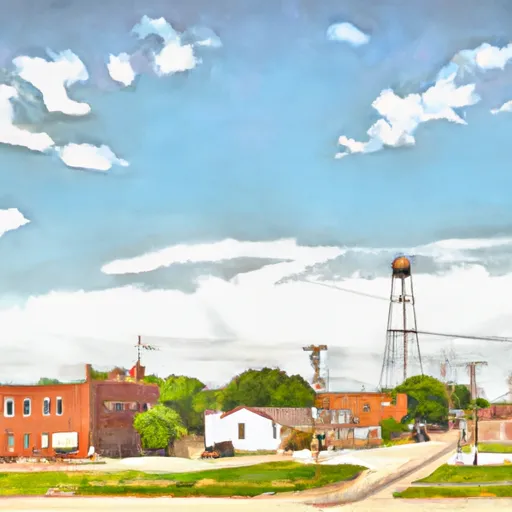-
 Snoflo Premium
Snoflo Premium
Get unlimited access to all our content
With no Ad interruptions! - Start Your Free Trial Login with existing account
Edgerton
Eden Index
Climate
8.3
•
Recreation
3.1
•
Community
1.0
•
Safeguard
4.6/10

Edgerton, Kansas is a small town located in Johnson County. The climate in Edgerton is characterized by hot summers and cold winters, with temperatures ranging from the high 80s in summer to single digits in winter. The town is situated near the Gardner River, which is a tributary of the Kansas River. The hydrology constituents of the area include agricultural runoff and stormwater runoff from the surrounding urban areas. Outdoor recreation opportunities in Edgerton include hiking, camping, and fishing at nearby parks and lakes such as Hillsdale Lake and Gardner Lake. Additionally, the town is home to the Midwest's largest rail hub, offering railroad enthusiasts a unique experience.
What is the Eden Index?
The Snoflo Eden Index serves as a comprehensive rating system for regions, evaluating their desirability through a holistic assessment of climate health, outdoor recreation opportunities, and natural disaster risk, acknowledging the profound impact of these factors on livability and well-being.
Climate Health Indicator (CHI): 8.3
Edgerton receives approximately
998mm of rain per year,
with humidity levels near 81%
and air temperatures averaging around
13°C.
Edgerton has a plant hardyness factor of
6, meaning
plants and agriculture in this region thrive during a short period during spring and early summer. Most
plants will die off during the colder winter months.
By considering the ideal temperature range, reliable water supplies, clean air, and stable seasonal rain or snowpacks, the Climate Health Indicator (CHI) underscores the significance of a healthy climate as the foundation for quality living.
A healthy climate is paramount for ensuring a high quality of life and livability in a region, fostering both physical well-being and environmental harmony. This can be characterized by ideal temperatures, reliable access to water supplies, clean air, and consistent seasonal rain or snowpacks.
Weather Forecast
Streamflow Conditions
Osage
Area Rivers
Osage
Snowpack Depths
Osage
Reservoir Storage Capacity
Osage
Groundwater Levels
Recreational Opportunity Index (ROI): 3.1
The Recreational Opportunity Index (ROI) recognizes the value of outdoor recreational options, such as parks, hiking trails, camping sites, and fishing spots, while acknowledging that climate plays a pivotal role in ensuring the comfort and consistency of these experiences.
Access to outdoor recreational opportunities, encompassing activities such as parks, hiking, camping, and fishing, is crucial for overall well-being, and the climate plays a pivotal role in enabling and enhancing these experiences, ensuring that individuals can engage in nature-based activities comfortably and consistently.
Camping Areas
| Campground | Campsites | Reservations | Toilets | Showers | Elevation |
|---|---|---|---|---|---|
| East River Park | None | 790 ft | |||
| John Brown Memorial Park | 35 | 868 ft | |||
| Bernice State Park | None | 754 ft | |||
| Snowdale State Park | None | 633 ft | |||
| Spavinaw State Park | 100 | 638 ft | |||
| Lake Miola City Park | 35 | 910 ft | |||
| Osawatomie City Lake | 6 | 892 ft | |||
| Elmore Park | None | 805 ft | |||
| Cherokee State Park | None | 826 ft | |||
| Kamp Siesta | None | 893 ft |
Nearby Fishing
Catastrophe Safeguard Index (CSI):
The Catastrophe Safeguard Index (CSI) recognizes that natural disaster risk, encompassing floods, fires, hurricanes, and tornadoes, can drastically affect safety and the overall appeal of an area.
The level of natural disaster risk in a region significantly affects safety and the overall livability, with climate change amplifying these risks by potentially increasing the frequency and intensity of events like floods, fires, hurricanes, and tornadoes, thereby posing substantial challenges to community resilience and well-being.
Community Resilience Indicator (CRI): 1.0
The Community Resilience Indicator (CRI) recognizes that education, healthcare, and socioeconomics are crucial to the well-being of a region. The CRI acknowledges the profound impact of these elements on residents' overall quality of life. By evaluating educational resources, healthcare accessibility, and economic inclusivity, the index captures the essential aspects that contribute to a thriving community, fostering resident satisfaction, equity, and social cohesion.

